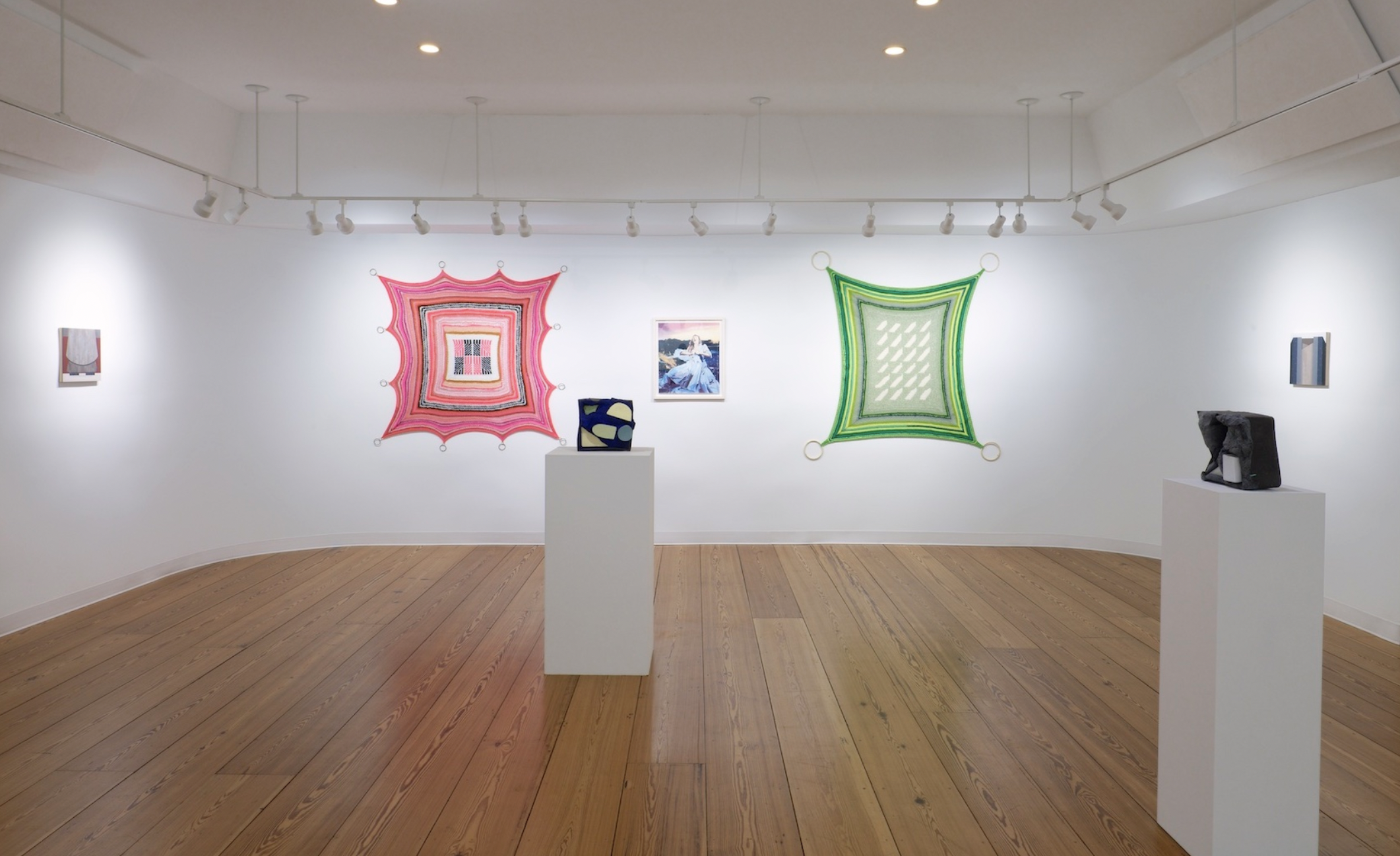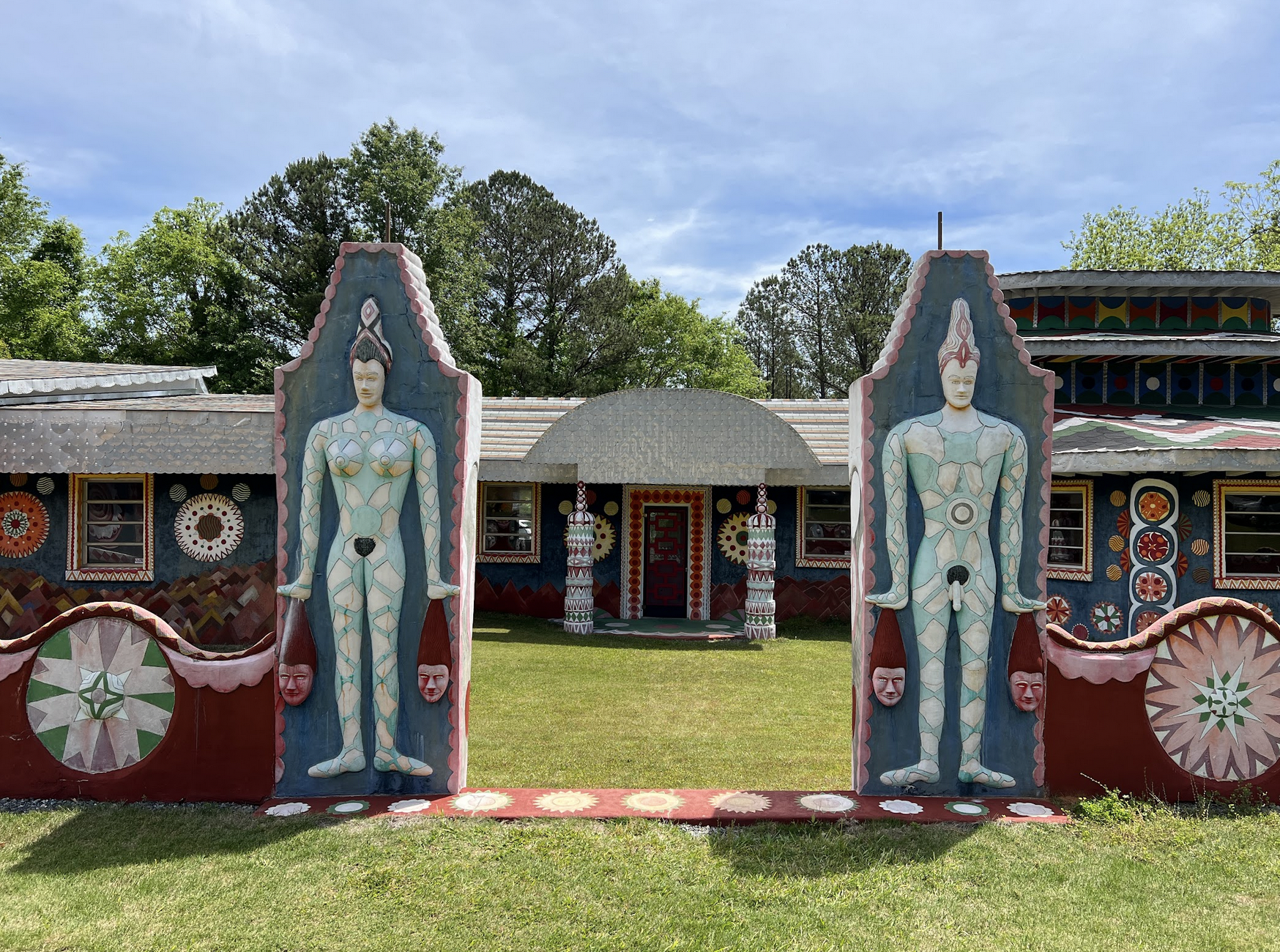Float, Fly Transcend…, Alabama Contemporary, Mobile, Alabama, 2021, pictured Barb Smith, Keiko Narahashi, Krista Clark, Katherine Bradford, Matthew F Fisher
The Fuel and Lumber Company
In our collective past, most American towns had a fuel and lumber company to provide basic goods and services. Believing art and culture to be among the needs vital to the health of any community, artists Amy Pleasant and Pete Schulte founded The Fuel And Lumber Company in Birmingham, Alabama to facilitate exhibitions and related programming in the Southeast and beyond. The Fuel And Lumber Company is an idea, not a traditional brick and mortar space, dedicated to contemporary art and community engagement.
Interview with The Fuel and Lumber Company founders Amy Pleasant and Pete Schulte
Questions by Emily Carol Burns
I am so thrilled to chat with you as I have been following your program for a long time and I'm a big fan. On your website you state that "The Fuel and Lumber Company is an idea, not a traditional brick and mortar space, dedicated to contemporary art and community engagement." Can you tell us more about your approach? Do you primarily curate shows in other locations around the country?
When we first established F&L in 2013, we briefly worked as a project space (in both Tuscaloosa and Birmingham) but quickly realized that we didn’t want a regular gallery schedule or to maintain a brick-and-mortar space. Based on the track record of those early exhibitions, we began to receive invitations from artist-run spaces, galleries and institutions.
Initially, we were focused on hosting shows locally and regionally that put the work of artists living in the Southeast into a broader context with those working nationally and internationally. Since then, invitations have come in from further afield and have broadened our footprint, but we still adhere to that initial philosophy in that we hope to contextualize the work or artists living outside of the major art centers, at various stages of their careers, with those who have had more exposure.
F&L has three guiding principles:
1.) The Fuel and Lumber Company is about art and artists.
2.) The Fuel and Lumber Company is not involved in the commerce of art. We are not moneychangers.
3.) No assholes.
Nocturne, Brackett Creek Editions, New York, New York, 2022, pictured David Onri Anderson, Susanna Coffey, Emily Weiner, Ben Estes
Can you tell us the story of the name The Fuel and Lumber Company?
Pete grew up near the childhood home of musician Bix Beiderbecke (1903-1931), who was something of a Hank Williams-like (immensely talented but tragic) figure in the early history of jazz. When Biederbecke was growing up along the Mississippi River in Davenport, Iowa, his family owned a business called The Davenport Fuel and Lumber Company that supplied townspeople with an array of basic necessities. We really like the sound of the name, and more importantly, we believe art and culture to be basic necessities for the overall health and well-being of any community.
You are based in Birmingham, Alabama. What is the area like for artists?
Birmingham is a mid-sized city. There are a lot of artists working here and it is still an affordable place to live. Unfortunately, there is not a solid infrastructure to support artists, specifically in regards to studio space, grants and awards, and exhibition opportunities. However, rather than focus on the limitations, we embrace the larger artist community that is the Southeast. There is an enormous amount of collective energy around us.
What are your backgrounds as artists and curators? How did you become interested in the arts?
Amy was raised in a very creative environment that supported her interest in art from a young age. Pete was not, but found his way here nonetheless. Amy attended The School of the Art Institute of Chicago (BFA, 1994) and the Tyler School of Art (MFA, 1999). Pete went to the University of Iowa (BFA 1996, MFA 2008). We were both privileged to study with accomplished and generous mentors, as well as an inspired cohort of fellow artists. Both of us have been fortunate to live our lives as practicing artists.
8, Laney Contemporary, Savannah, Georgia, 2022, pictured Mary Laube, Las Hermanas Iglesias, Melora Kuhn, Fawn Krieger
As artists and teachers with full schedules, what is it like balancing this project as well? How does it fit in with the rest of your practice?
While Pete is a Professor of Art at the University of Alabama, Amy does not in fact teach. However, as the question suggests, negotiating our schedules is most definitely a balancing act! Curating exhibitions can be demanding, and at times definitely pulls us out of our studio routines, but we love doing it and have found a way to make time for the opportunities that we find the most intriguing. We have come to view F&L as another wing of our creative practice(s) and feel privileged that so many artists, whom we deeply admire and respect, have entrusted us with their work and the responsibility of putting it into the world in provocative ways.
What is it like collaborating with each other?
We have found the curatorial aspect of our practices to be extremely rewarding. Any endeavor that requires collaboration also requires compromise and the ability to negotiate disagreement. While we haven’t collaborated on art, per se, F&L is where our overlapping interests coalesce to create something that did not exist before and we love being able to do it together ☺
What kinds of shows are you most drawn to curating?
Our curatorial approach is akin to Duke Ellington’s philosophy about music, wherein he states, “There are simply two kinds of music, good and that other kind.”
We prefer the good kind.
You recently curated a show titled 8 at Laney Contemporary in Savannah, Georgia. The photos are stunning. Can you tell us a bit about the exhibition?
When Susan Laney invited F&L to curate an exhibition at her gallery in Savannah, it was right after the Supreme Court’s decision to reverse Roe v. Wade and we felt that this moment demanded that we do something different, especially with the exhibition taking place in the state of Georgia and scheduled to open days before the November elections. The exhibition included the work of Allison Grant, Alicia Henry, Las Hermanas Iglesias (Lisa and Janelle Iglesias), Melora Kuhn, Fawn Krieger, Sarah Lasley, Mary Laube, and Katarina Riesing - all female-identifying artists - whose profound individual voices united within the gallery walls to create a chorus of dignity and strength. We believe that art opens doors by posing questions rather than determining answers and 8 asked pointed questions about the complexities of identity and control of bodies. The artists were chosen for their distinct visual voices, and an unexpected and powerful harmony developed in their cross-cultural dialog.
The number 8, itself a visual symbol of infinity, suggests an array of meanings including the flow of power, a source of good energy, and a strong sense of overcoming. Turned on its side, 8 symbolizes limitlessness, which in the context of this show may remind us of the immeasurable capacity of what art can accomplish and what creative people united can realize. It also suggests the unlimited and undefined possibilities of meanings that can be produced by viewer-participants in dialog with one another.
8, Laney Contemporary, 2022, Savannah, Georgia, pictured Allison Grant, Alicia Henry, Katarina Riesing, Fawn Krieger
How do you find artists that you are interested in showing?
We don’t really have a formula for finding artists. We simply try to move through the world with eyes, heart and mind wide open. There is an ever-evolving archive of artists, many of whom we have followed for years. When the right project meets the right artist(s), we do our best to make it sing.
With the exception of the aforementioned exhibition, F&L does not generally build shows around ideas, language, or theories. We begin and end with the art. This process, especially at the point of inception, is usually intuited, non-verbal, and based largely on a feeling… of rightness.
Some of our most profound art experiences have taken place in artist-curated exhibitions. They just feel different. The work, and the sparks created in the space in between, feel charged, alive, visceral, and poetic.
Are there any other artist-run projects, or galleries in your region that are involved in interesting projects that people might like to know about?
Electric Shed (Nashville); Tops Gallery (Memphis); Bad Water (Knoxville); Vinegar (Birmingham); Ground Floor Contemporary (Birmingham); Sarah Moody Gallery of Art at The University of Alabama (Tuscaloosa); Dodd Galleries and The Athenaeum at The University of Georgia (Athens); Tif Sigfrids (Athens); Abroms-Engel Institute for the Visual Arts at The University of Alabama-Birmingham; THE END Project Space (Atlanta); whitespace (Atlanta); Temporary Art Center (Atlanta); Stove Works (Chattanooga); Laney Contemporary (Savannah).
I am curious about the growth of arts communities in small cities as Covid caused so many people to leave the big art centers like New York City. Have you noticed an uptick of emerging art spaces and projects popping up in new places?
We have not necessarily noticed an uptick of new spaces - not here, at least - but we do feel a greater sense of urgency and vitality among artists and the spaces showing the work. Nothing like an existential threat and social revolution(s) to give one a sense of purpose.
What was a favorite exhibition you've seen recently?
Women of Mesopotamia at the Morgan Library (NYC); a lovely and moving studio visit with artist Suzan Frecon; Lonnie Holley at the UTK Downtown Gallery and the Big Ears music festival both in Knoxville, Tennessee stand out among recent experiences.
Pasaquan, Buena Vista, Georgia, site for upcoming exhibition and performances, September 2023
What are you working on right now? What's up next?
We are currently working on our largest and most complex exhibition to date, which will open in September 2023 at both Pasaquan, the national heritage site created by American visionary ST. EOM (Eddie Owens Martin, 1908-1986) in Buena Vista, Georgia, and The Bo Bartlett Center at Columbus State University in Columbus, Georgia. The exhibition will put St. EOM’s work in conversation with contemporary artists, David Onri Anderson, Ryan Akers, Merrilee Challiss, Julia Elsas, Erik Frydenborg, Leia Genis, Sonya Yong James, Rob Morgan, Sarah Peters, and Sergio Suarez.
The as-yet-to-be-titled exhibition will open on September 15th at The Bartlett Center with a performance by Sonic Mud (Julia Elsas and Kenny Wollesen) and September 16th with performances by New Future City Radio (Rob Mazurek and Damon Locks) and Sonic Mud. We are also working on a catalog that will accompany the exhibition.
Anything else you'd like to add?
Thanks for the invitation to discuss The Fuel and Lumber Company. We love Maake and appreciate the opportunity!
Thanks so much for taking the time to talk with us!
To find out more about The Fuel and Lumber Company check them out on Instagram or on their website.





